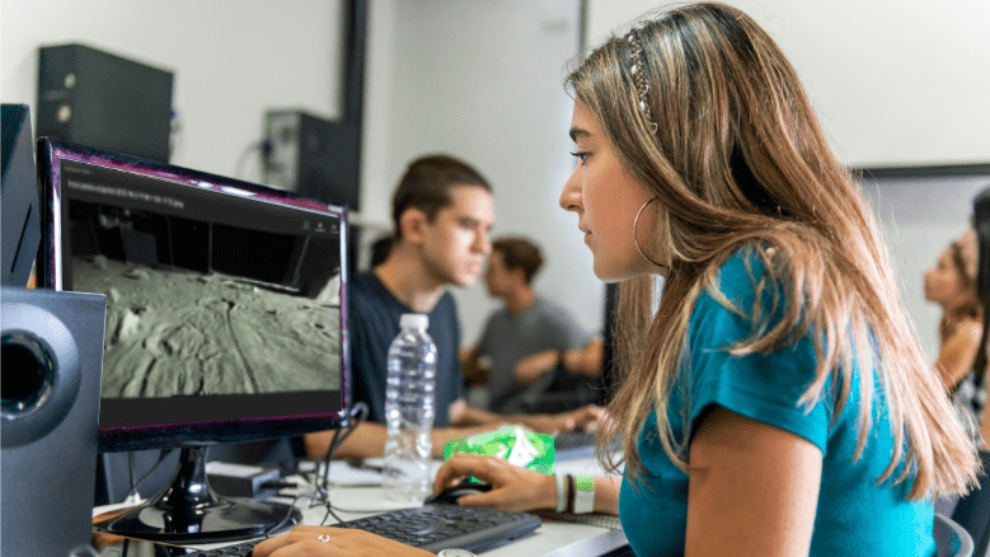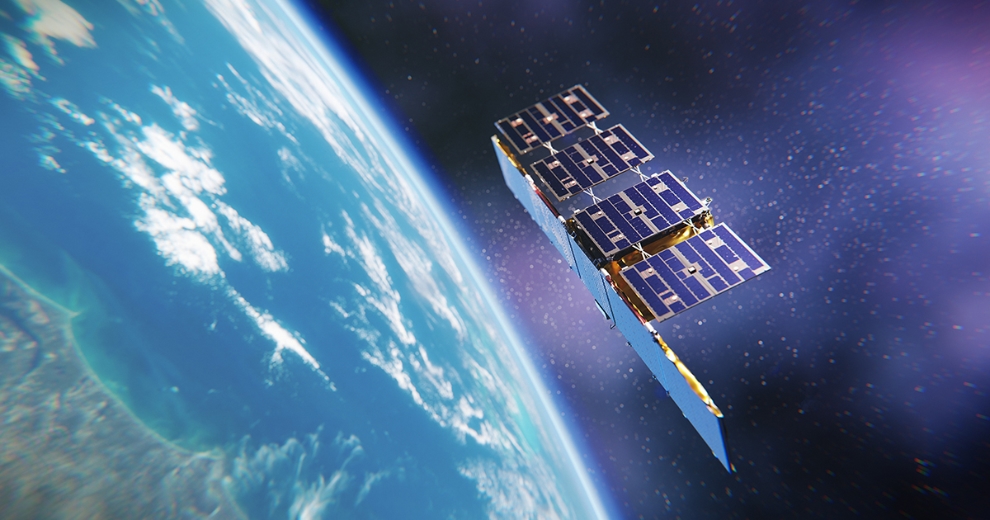The Canadian Space Agency is taking a new student-focused “Rover Driving Academy” Canada-wide. According to an announcement from Mission Control Space Services, whose Spacefarer technology is used for the lunar rover simulation, the CSA is working with Mission Control “to provide the Rover Driving Academy for students across Canada.”
SpaceQ reached out for comment, and Mission Control Founder and CEO Ewan Reid replied via email.
Mission Control creates software and other technology used in space-based applications, particularly in rovers. Their lead platform right now is Spacefarer, which (according to Mission Control) customers use to “simplify mission development and operations while unlocking the potential of new scientific and commercial opportunities on the Earth, Moon, Mars, and beyond.” The platform allows customers to operate robots and payloads remotely, create command sequences for them, and look at an overview of the data generated by rovers and their payloads. It also features “cloud-based deployment for distributed teams.”
Students taking on rover mission
In that vein, Mission Control now offers the Rover Driving Academy, which uses Spacefarer to allow students to remotely control rovers at Mission Control Space Center’s “Moonyard” in Ottawa. Students are able to train in a Unity-based simulator created by Lindsay-based (and Nunavut-founded) Pinnguaq. The simulator teaches students the different roles that rover team members will play—such as controlling the rover, the camera, or a scientific payload like a mass spectrometer. The simulator uses controls and a UI similar to the ones used by students
Pinnguaq also, Reid said to SpaceQ, created “four optional space curriculum lessons that are available for teachers to use all across Canada.” These are freely accessible on the Rover Driving Academy page, along with both the Pinnguaq simulator and Academy-related educational materials from Mission Control.
After the simulator, teachers can sign up for their classes to spend time at the Moonyard. Students log in remotely, each taking on a different role using a different computer, and conduct a science mission operating real rovers in a simulated moonscape. Students take on realistic roles, like PTZ (Pan-Tilt-Zoom) Operator, Rover Navigator and Rover Safety, with a Rover Scientist role that even uses a real science tool, a Laser-Induced Breakdown Spectrometer (LIbS), to identify lunar rocks and soil.
Reid said that “for many years we conducted smaller scale deliveries of our Mission Control Academy program to a handful of classes each year,” but the CSA agreement has changed the scale of the program. Thanks to the CSA’s support, students in Grade 6-9 are being signed up nation-wide. The announcement said that over 2000 students have already been able to take advantage of the Academy, and that “thousands more students will be given the chance to be inspired by Canada’s role in space exploration” over the coming months. No details were given on the specific nature and amount of any financial or in-kind support, however.
Reid said that “the reactions from the students have been fantastic,” and that “it’s great to hear the excitement in their voices as they drive the rovers, looking for different elements in the Moonyard.” “We’re hearing great reviews of the students working together in teams,” he added, “ tying the RDA into their science and space units, getting students excited for STEM and opening their eyes to different opportunities to work in space.”
Reid also said that “RDA gives them the opportunity to see what it would be like to do real mission operations,” and that “students also learn the importance of teamwork and communication skills,” emphasizing that space missions “need great people to work together to push the bounds of human discovery and advancement.”
In the announcement, Janice Cudlip, Lead of the Youth STEM Initiatives Team at the CSA, was quoted saying that “the Rover Driving Academy is a sample of what it is like to be part of a mission team and start building the essential skills to have a career in space.” Reid was quoted in the announcement as saying “we are giving students the opportunity to use the same software used on actual lunar missions, and hopefully realize that with imagination and dedication, the future is theirs to create and that anything can be possible.”
In his comments to SpaceQ, Reid added that “we hope to continue inspiring students for many months and years to come.”



